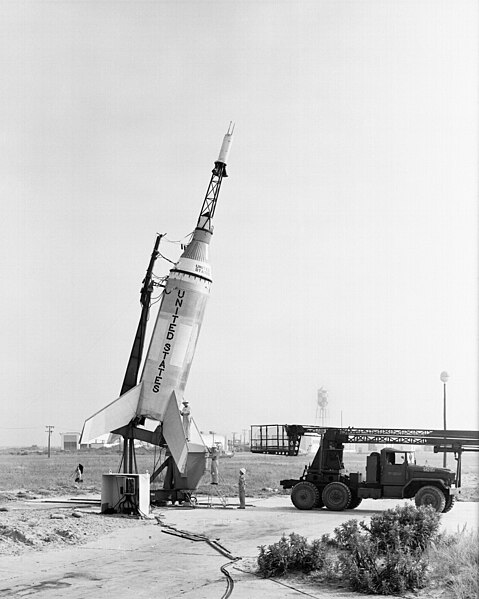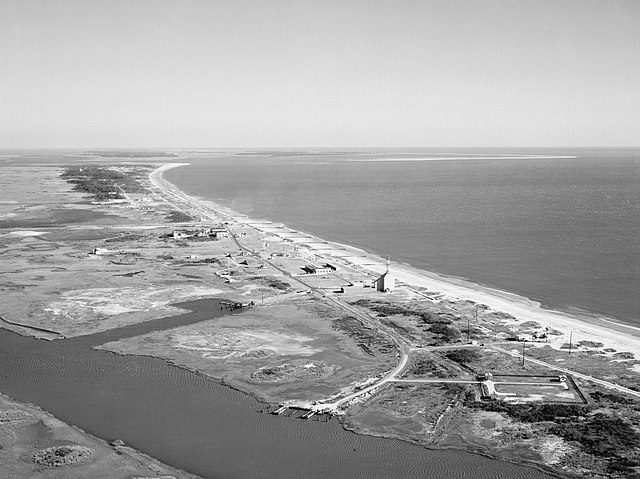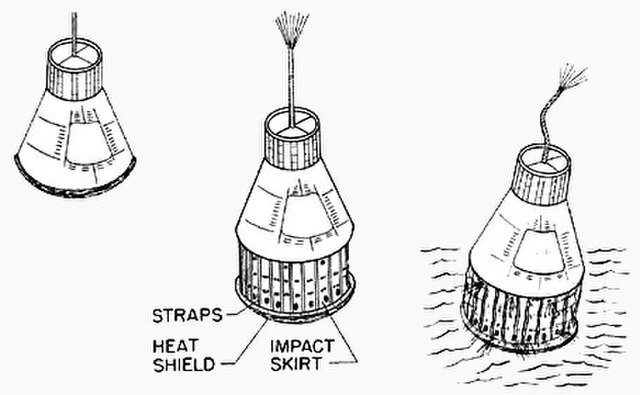Little Joe was a solid-fueled booster rocket used by NASA for eight launches from 1959 to 1961 from Wallops Island, Virginia to test the launch escape system and heat shield for Project Mercury capsules, as well as the name given to the test program using the booster. The first rocket designed solely for crewed spacecraft qualifications, Little Joe was also one of the pioneer operational launch vehicles using the rocket cluster principle.
The Little Joe 1 launch vehicle with Mercury capsule, August 1959.
An unflown Little Joe booster (backup for LJ-2) along with the boilerplate capsule on display at the Air Power Park in Hampton, Virginia
Image: Little Joe on launcher at Wallops Island GPN 2000 001883
Image: Little Joe 6 launch 10 4 1959 from Wallops Is. Virginia
Project Mercury was the first human spaceflight program of the United States, running from 1958 through 1963. An early highlight of the Space Race, its goal was to put a man into Earth orbit and return him safely, ideally before the Soviet Union. Taken over from the US Air Force by the newly created civilian space agency NASA, it conducted 20 uncrewed developmental flights, and six successful flights by astronauts. The program, which took its name from Roman mythology, cost $2.68 billion. The astronauts were collectively known as the "Mercury Seven", and each spacecraft was given a name ending with a "7" by its pilot.
Wallops Island test facility, 1961
Mercury Control Center, Cape Canaveral, 1963
Retropack: Retrorockets with red posigrade rockets
Landing skirt (or bag) deployment: skirt is inflated; on impact the air is pressed out (like an airbag)







